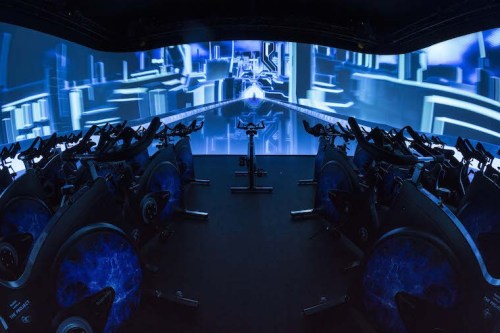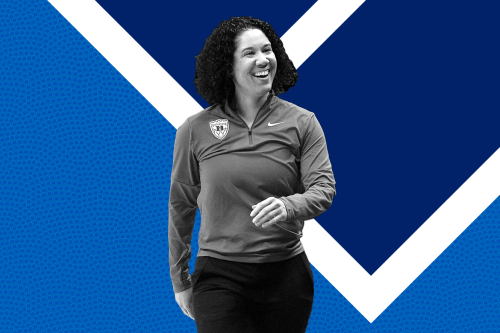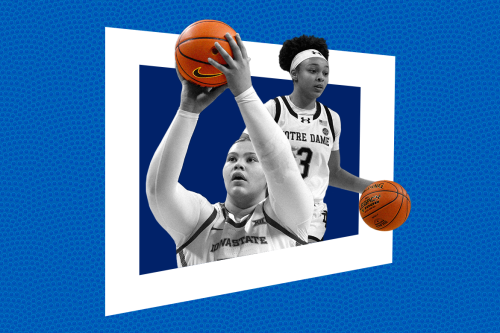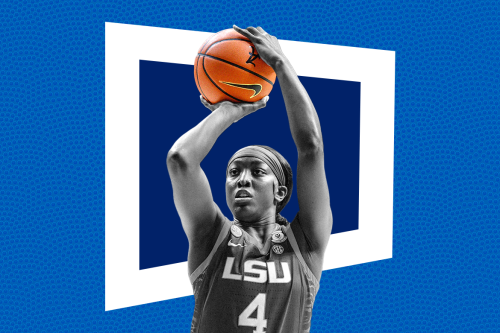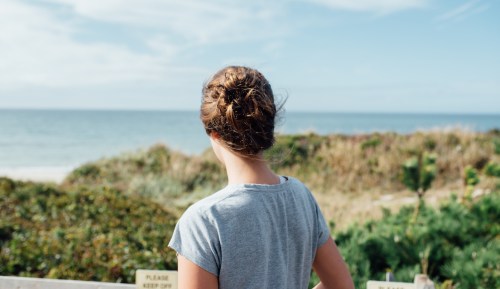Recently, I felt my stomach drop as I pedaled as fast as possible over a steep hill—except that the hill was a computer-generated graphic and I was riding a stationary spin bike in Manhattan. The following week, I spotted the Eiffel Tower while pedaling inside a dark room in Brooklyn.
Welcome to the world of “immersive” indoor cycling, a growing, experiential-based workout trend that’s adding visual elements to spinning like never before.
And you don’t need to be in a bike-friendly city to grab a seat: IMAXShift, which opened its first studio earlier this month in Brooklyn, joins Les Mills’ The Trip, (currently offered at seven gyms around the world, including TMPL in New York City and 24-Hour Fitness in Santa Monica), and Equinox’s The Pursuit (now in 26 of its gym locations across the country, including NYC, LA, Chicago, Miami, and Dallas).
“We’re really redefining what people expect to get from fitness and what a workout can be,” says Bryan Marcovici, CEO of IMAXShift. In all three of these classes, riders are placed in front of a screen and then provided (very different) viewing experiences, which according to some add elements like entertainment value and motivation to the workout.
But does the visual element provide real value, or is it just another (very expensive—IMAXShift is $34 for a 45-minute ride) workout gimmick?
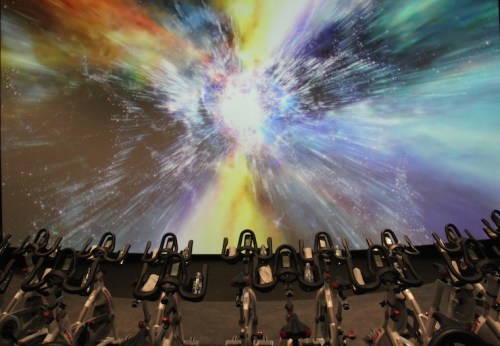
Virtual reality riding
At the core of Les Mills’ approach to immersive fitness with The Trip is the feeling that you’re actually going on a, well, trip during the class. The brand’s designers use computer-generated graphics to create set “trips” that are essentially a video game for spinning (Trip 6 was just released and a new one debuts each quarter). Playlists match the speed of the visuals, and instructors are then trained to teach the trip, so that if they’re telling you to crank up the resistance because the next hill is rough, you’re actually looking at said hill.
“What I’m very proud of is how the team worked to merge the music that they pick really carefully with the graphics, and they create this story,” explains Les Mills CEO Jesper Magnusson. “When you speed up, the speed you’re moving through the world increases.” The effect is pretty mind-blowing. I wasn’t kidding about my stomach dropping during The Trip, and on one very curvy stretch of road I stopped to observe a phenomenon: The other riders’ brains were so convinced they were on the track that several people were leaning to the right and left. I felt like I could zone out and just zoom through, while still working up a serious sweat.
This is where IMAXShift—which incorporated all of its proprietary IMAX movie technology like a curved screen, theater geometry, and speakers behind the screen—goes wrong. Instead of a course, its approach essentially shows scenic images (think forests and cityscapes), but you’re not made to feel like you’re a part of it. Instead, it’s a bird’s eye view, reminiscent of an old-school computer screensaver. The teaching style—they tapped top talent Jesse Alexander and Bree Branker, both formerly stars at Flywheel—doesn’t allow for you to be “transported,” since you’re focused on resistance and RPMs throughout. Instead of being entertained, I was mostly thinking, What do crashing ocean waves have to do with tap backs? The visuals were almost distracting.
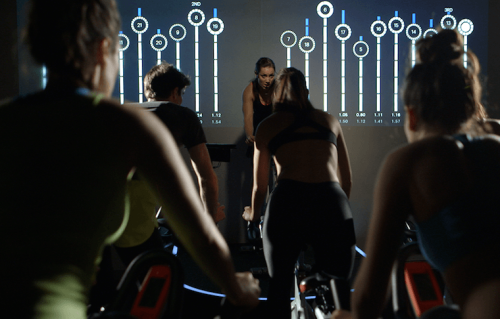
Metrics, magnified
Which is not to say that a focus on stats can’t work in this realm. In fact, Equinox’s The Pursuit is all about them, with metrics from the bikes essentially projected onto the screen in front, where they’re used in interactive “games.”
“Our members, many of whom are competitive by nature, love the strong technology component in class and are pushed by the metrics-driven nature of the program,” says Jeffrey Scott, senior national group fitness manager for cycling at Equinox. “Most of the classes are at capacity, and we’re working hard to expand the offering to meet the demands of our members.” It works because the visuals act as an incentive as you watch your number on the screen and race to compete with your classmates.
And these visual cycling purveyors will likely be racing to keep up with each other—and what will surely be new competitors—as gym-goers decide if there’s value in the virtual.
Pro tip: Bring earplugs to your next cycling class. (And hand sanitizer.)
Sign Up for Our Daily Newsletter
Get all the latest in wellness, trends, food, fitness, beauty, and more delivered right to your inbox.
Got it, you've been added to our email list.
